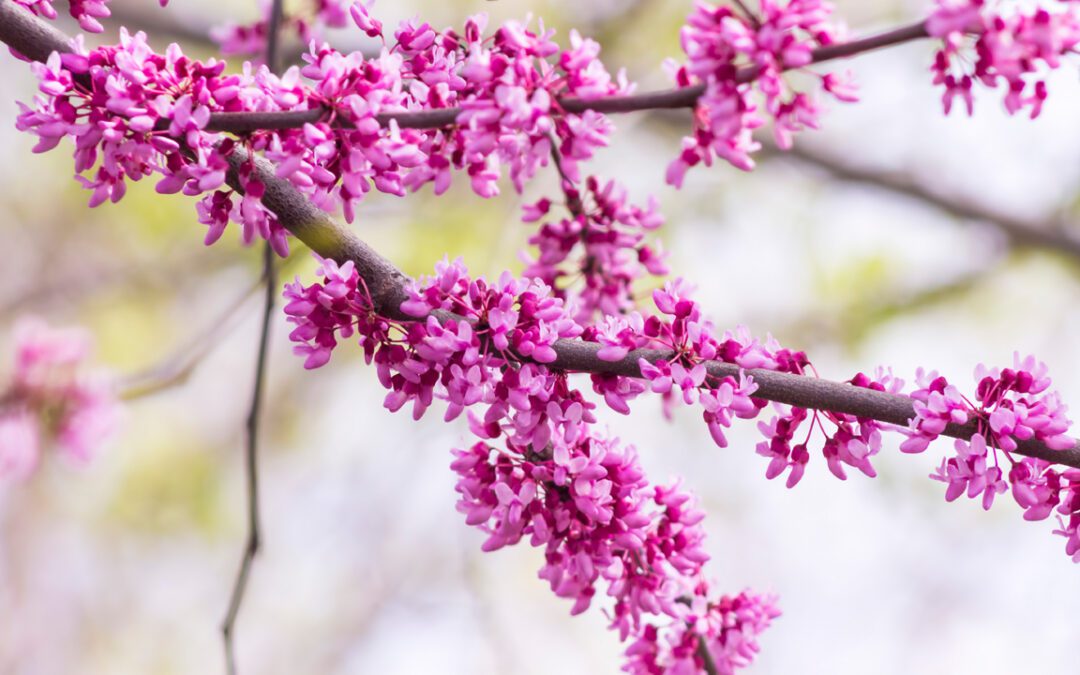Happy Vernal Equinox! We certainly had a beautiful day for it. And remember March 1st? Mild temps. Sun. Definitely lamb weather! And despite a few chilly, windy days and tonight’s forecasted snow, the month so far has held to that gentle, lamb-like vibe. Wisconsin’s Department of Agriculture, Trade and Consumer Protection, known affectionately as DATCP, tracks seasonal development through a calculation called growing degree days. This number measures accumulated heat and gives us clues as to plant development and insect and animal activity. It’s super useful to predict when the sawfly larvae will begin munching on your mugo pines or when to spray your magnolias for scale. As of last week we were 28-29 days ahead of last year. Temps are moderating for the rest of the month, but it will be interesting to see if that old saying about the lion weather is true this year. Early spring weather is notoriously fickle, but we count on April to be a more golden month. Didn’t you find yourselves looking for any excuse to be outdoors in the early spring sunshine? It feels as though everything alive is aching to stretch- length of the days, leaves on the trees and germinating seeds.
Once your soil is thawed out, new lily bulbs can be planted directly into the garden unless your soil is really wet though the drier winter makes this unlikely. If you aren’t sure, try the chocolate cake method. Pick up a handful of soil and gently squeeze it into a ball. Then poke your finger into the middle. If the ball breaks apart like chocolate cake, your soil is ready for planting. If your finger makes a squished hole, ala really gooey brownies, wait another few, preferably dry, days. Well-drained, south-facing borders and raised beds may be ready now. You could sow some cool weather veg as long as you have a plan to protect the emerging leaves from frosty nights. Floating row covers are excellent for this and are inexpensive and have many other uses.
It’s too early to plant out your tender summer-flowering bulbs like dahlia, begonia and canna outside, but you can start them in pots, keeping them in the house where it’s warm. Once you sees signs of growth, it’s okay to put the pots outside on warmer, sunny days and bring them back in at night.
Be sure to do a thorough clean-up this spring of areas where you have fruiting trees and shrubs. Rake away any old foliage and fruit, and finish your pruning as soon as possible. Add a 2 to 3-inch layer of mulch to the root area. Studies show that a nice thick layer of wood mulch will greatly increase yields, so don’t skimp.
Fertilize fruiting trees and shrubs with a slow release, low nitrogen fertilizer before growth begins. And as long as your fruit tree buds haven’t broken open, it is okay to apply dormant oil sprays to prevent insect infestations. This product can smother any egg masses, reducing the hatch. Follow package instructions. If you had a problem with scab last year, apply a fungicide as soon as you notice green tips on the buds. Repeat after the petals fall and resume applying the treatment every 10-14 days. If the mid-summer is dry this year, you can stop spraying then.
Given last summer’s general fungal issues, pick up a biologic fungicide, like Revitalize, to combat the inevitable outbreak of powdery mildew. To prevent it from getting a toehold, apply to your ninebarks, lilacs, peonies and serviceberry once petals have fallen from area crabapples. Revitalize uses beneficial bacteria to control many fungal diseases. It’s available in both a ready-to-use spray bottles and a concentrate formulated for hose-end sprayers, making it easier to treat larger plants or big areas.
Specialty seed potatoes, onions and some spring garlic were delivered to the Garden Center on Tuesday and can be planted as soon as your planting beds can be worked. And pansies, that most happy harbinger of spring, have been available for a couple of weeks. They can stay outside as long as night temps stay above 32 degrees. If you can’t resist, and honestly who can, cover them at night or move them in and out of your house or garage.


